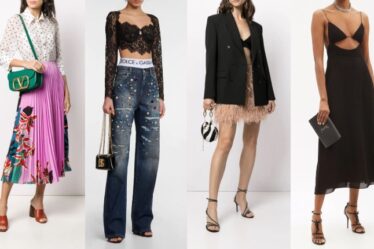
Procter & Gamble Co. posted a second straight quarter of sluggish sales growth, dragged down by minimal price increases and weakness in key areas such as skin and baby care.
Organic sales, a measure that strips out items such as currency volatility, rose 2 percent in the fiscal first quarter ended Sept. 30, P&G said Friday. Analysts had projected an increase of nearly 2.1 percent. P&G’s prices were up, on average, by 1 percent in the period — the same as the previous quarter and well below the increases of a year ago.
A surprise decline in the company’s beauty category was driven by skin care, which reported a steep drop in sales and lower volume due to weakness in its premium SK-II brand, which is sold in China. That was partially offset by P&G’s fabric and home care category, including Tide laundry detergent, that outperformed expectations amid higher volumes.
After adjusting for the fact that the stock is trading Friday without the right to receive a dividend payout, P&G shares fell 0.8 percent before US markets opened. The stock has gained 18 percent this year through Thursday, while the S&P 500 Index rose 22 percent.
The results show a degree of stabilisation from the previous quarter, when growth missed Wall Street’s expectations by a wider margin. The company reiterated its targets for revenue and earnings, including organic sales growth of as much as 5 percent, for its current fiscal year, indicating it expects growth to accelerate in the coming quarters.
“It’s a relatively softer quarter on the top line,” chief financial officer Andre Schulten said in an interview, adding that weakness in China and the Middle East has weighed on results. War in the Middle East has sparked boycotts and eroded consumption, while China has experienced lower consumer confidence. “Those two are really the headwinds here, but the core of the business is strong,” Schulten said.
Nonetheless, it’s the latest sign that it will be challenging for P&G to get back to the faster rates of expansion it experienced in recent years, while reinforcing that China remains a key hurdle for consumer-goods makers.
P&G has been looking to boost performance with premium products such as total body deodorant and razors for different body areas, with new items and features allowing more flexibility for higher prices. Schulten said that more expensive items, such as Oral-B electric toothbrushes, are performing well, and P&G is introducing a new lower-priced version to appeal to more consumers.
First-quarter adjusted gross margin, a measure of profitability, met estimates, despite unfavourable commodity costs.
While price increases have slowed considerably, Schulten said he doesn’t expect them to start declining. “There’s no cost development that would justify deflationary adjustment for us nor for the industry,” he said.
Volumes declined in the baby care category in the quarter. While the company has recently introduced an upgraded version of its Luvs baby diapers, Schulten said it’s too early to measure the results. The new version, dubbed Platinum, is advertised as being softer and more absorbent.
In China, P&G is trying to be more targeted with advertising. Besides skin care, P&G reported other areas of softness in China, including in oral care.
“Consumer sentiment is still very negative,” Schulten said about China, where he added that “net worth is heavily tied up in the stock market and the real estate market. They’re very careful with their spending.”
By Leslie Patton
Learn more:
P&G Posts Surprise Sales Drop as Demand Slows Despite Price Controls
Attempts to raise prices more slowly have not been enough to win back price-conscious customers for not just P&G, but also for its CPG giant rivals Nestle and Unilever.



